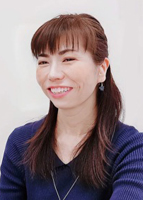There are differences in children’s growth Yukimi Hira (Representative Director of Izumiotsu Development Support Study Group Lien)

With the increase in dual-income families, the child-rearing environment is no longer limited to the immediate family unit. In addition to caregivers, interactions with various people, such as teachers at facilities where children can be looked after from birth, affect the child’s physical and mental growth. This is true whether the child has a developmental disorder or not. However, if a child has a developmental disorder, activities may not go smoothly in places where they spend a long time outside the home.
Developmental disorders are innate differences and uniqueness of the brain, but these differences appear during the “developmental process.” As the child grows, the differences from the majority become apparent.
After birth, children’s sleep, breastfeeding, and bowel movements are unstable, and many families live a completely different life than before. Through regular checkups to check their growth, information on the Internet and in parenting books, advice from mommy friends and relatives, and interactions with those around them, parents learn that each child’s growth is different. At the same time, I think there are many people who raise their children while feeling a sense of anxiety that they are falling behind too much.
I was already aware of the difference between my child and other children when he was two years old. He liked the flow of life to go according to the usual, and had his own standards for how to play with toys. He also hated any changes to those things. There were many things that made me wonder why he was like that, such as having trouble falling asleep and waking up at the slightest noise, and liking certain foods, but even when I told the relevant organizations and people around him, they never judged that he was having any difficulties in daily life. At that time, the life I was raising my child in a relaxed one-on-one setting was probably just right and reassuring for my child. Even if I had doubts, it didn’t go beyond that. When I stepped into group life with the idea of enrolling him in kindergarten, I was more concerned about the differences than ever before. Above all, he didn’t seem to enjoy interacting with the other children. And that was the opportunity that led me to the special education center.
Considering my child’s development as an example, he likes life to go according to the usual, has his own standards for how to play with toys, and is extremely averse to changes in these, which makes social imagination difficult. Because it is difficult to imagine, he feels security in the same old things and prefers them. The fact that he wakes up at the slightest noise and likes certain foods suggests that he has auditory and tactile hypersensitivity due to a sensory bias. When he enters a group life, he shows no interest in other children, and has difficulty communicating, which relates to the definition of social interaction.
I think that situations in which children throw tantrums and cry every day occur when the adults around them continue to force the child to do things that he finds unpleasant. By noticing that he is different from other children at an early stage, I think it is possible to avoid situations that make the child feel excessive anxiety. I also think that this will have a significant impact on the child’s future growth.
